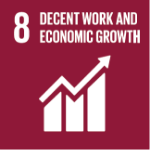
Annual Report and Accounts for the year ended 31 December 2023
Our Group Business Model
Our group is made up of six businesses across three segments: industrial & logistics, residential and urban development.
From acquiring land and obtaining planning permission through to development and maintaining an investment portfolio, we work across the whole property value chain. And, while each business operates as its own profit centre, we encourage collaboration across the group – which spreads risk.

Our expertise
Hallam Land
- Identifying land with future potential
- The use of agency and option agreements, as opposed to buying all land outright, means less expenditure on each asset, allowing us to maximise the number of land opportunities that we are involved in at any one time.
- As investment is spread over many assets, this reduces the overall risk of involvement in the planning process and maximises the likelihood of making a return on the capital invested.
- Taking land through the complexities of the planning system
HBD, Stonebridge
- Acquiring and developing brownfield land or under performing property assets.
- Operating in diverse sectors to maximise development opportunities.
- Developing partnership arrangements
- Ability to self fund or source pre funding opens up opportunities. The businesses can commit to long-term projects, such as complex multi-site regeneration schemes.
Henry Boot Construction, Banner Plant, Road Link
- Project delivery in both the public and private sector.
- Creating trusted relationships and repeat business.
- Supplying a wide range of plant equipment efficiently.
Our diversified business
We balance the business in the following ways:
- Our land promotion business has an extensive portfolio which mitigates risk while planning permissions of varying duration are obtained.
- Our property development and investment business self-funds some projects, while others are delivered as joint ventures. Its portfolio generates a significant rental income, which facilitates investment in more diverse operational activities with higher returns.
- Our construction business also generates income that can be reinvested into a portfolio of land and property development projects.
- Finally, a significant amount of equity is retained in the business to lessen the need for external borrowing. This solid financial structure allows investment in higher profit and operations that produce higher equity.
Our Capital Structure
- Recurring Revenue: The revenue from construction and the property investment portfolio is regular and stable. This income allows Henry Boot PLC to maintain long term bank funding relationships.
- Cyclical Revenue: Sale of land and property developments generates cyclical revenue. These activities are riskier and give varying amounts of profit through each economic cycle. These profits, in good years, contribute significantly to the stable profits from construction and property investment.
The impact we're making
UN SDGs
When creating our Responsible Business Strategy, we engaged our stakeholders to understand which of the UN SDGs they felt our business could most positively impact.
Based on the feedback received, the Responsible Business Committee selected the below SDGs as those best aligned with our corporate purpose.





Society
All of the targets contained within the Responsible Business Strategy have been influenced and shaped through consultation with our people, our commercial and community partners, our senior management and Board, and our professional advisers to ensure that they are robust, ambitious (whilst also achievable) and will create the impact we aspire to achieve.
Our value generation
Our people
Our people deliver the core activities of our business model. We invest a significant amount of time and resource in their training and development to ensure they are empowered in their roles. We apply the same methods and dedication when we are recruiting to ensure we attract the highest calibre of people within the Group.
Communities
We have offices in ten locations across the UK, but we have projects which extend our community impact across the country. Wherever we operate it is fundamental to us that we develop strong relationships and partnerships with our communities. This could be by using the local supply chain on projects or volunteering our skill set to a local charity.
Customers
We are committed to maintaining our long standing track record of customer satisfaction. We continue to listen, understand and adapt how we can improve upon what we deliver, so we are able to further enhance the competitive advantage our Group brings to its customers.
Shareholders
Our priority is to protect the sustainability of our Group for our shareholders. By operating transparently and responsibly, we are able to create added value for our shareholders, providing updates on performance and changes to the strategic direction of the Group.